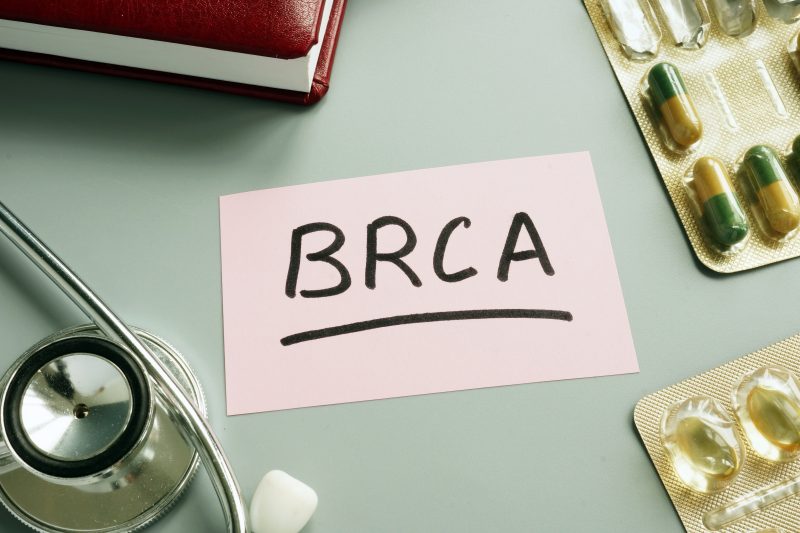PUBLISHED: 15th December 2009

by Rachel Altmann
Early one spring morning a baby girl was born. Her parents and her brother had eagerly awaited her arrival. She had a head of black hair with a spiral of white hair by her soft spot. Already in her first days of life the people around her could tell she was both sweet and strong. They could also tell that she had a variety of medical problems, although they didn’t know why. By the time she was a year old she had seen numerous specialists and had four surgeries to correct many of her identified medical problems, but it wasn’t until she was almost two years old that her parents learned that she had a rare and life-threatening disease called Fanconi Anemia (FA). Her name was Nina and she was my daughter.
How did Nina get this very rare childhood disease? Unbeknownst to me and her father, we both carry BRCA2 mutations. Our little girl received one mutated BRCA2 gene from each of us. Her FA is an inherited anemia that leads to bone marrow failure and/or leukemia and other types of cancer. When both parents have a mutation in the same FA gene, as we do, their children have a 25 percent chance of inheriting the defective gene from both parents. When this happens, the child will have FA.
Being a young BRCA mutation carrier involves many difficult decisions. Should I have prophylactic surgeries, surveillance, or a combination of both? What will my boyfriend think? The issue of childbearing also brings complex decisions: Should I rush childbearing? Does my partner also carry a BRCA mutation? These are important questions, particularly because of the chance of inherited FA.
Although there is no cure for FA, the Fanconi Anemia Research Fund (FARF) has been helping families, educating doctors and funding research to find a cure for 20 years. Through FARF I have made many friends of parents who are FA carriers. Once they learned they were both carriers (after having a child with FA) they made different decisions about how to proceed with their families. Some chose not to have any more children. Some used a sperm donor or adopted. Others opted for in vitro fertilization with pre-implantation genetic diagnosis or used sampling of the placenta to rule out FA early in the pregnancy. There is no right answer. The choices aren’t easy. Everyone must do what feels right to him or her. Remember that the E in FORCE represents empowered. With information you are empowered to make the decisions you need to make. You can learn more about FA by visiting fanconi.org.
More About Fanconi Anemia
By Margaret Snow, MD
Fanconi Anemia is a rare inherited disorder that can affect children. Children with FA have bone marrow that doesn’t produce enough blood cells. Several genes have been associated with FA, including the BRCA2 gene. A child must inherit two abnormal BRCA2 mutations—one from each parent—to develop FA.
Some children with FA have physical abnormalities such as alterations in skin pigment, deformity of the thumbs, a very small head size, or short stature. Other abnormalities in the heart, kidney, genitalia or hearing may also develop. Blood abnormalities usually develop before the age of 12, and may include fatigue and paleness, bleeding or bruising problems from low platelets, or susceptibility to infections from low numbers of white blood cells. The diagnosis of aplastic anemia is confirmed by a bone marrow biopsy that reveals an abnormally low number of stem cells that make red and white blood cells and platelets.
The risk for two parents carrying an abnormal BRCA gene is highest in couples where one or both parents are of Jewish descent. If you or your partner’s family has a known BRCA mutation, and you are concerned about the possibility of having a child with FA, please consult with a qualified expert in cancer genetics.
Finding a Genetics Expert
For information on finding an expert in cancer genetics, see the “Finding Specialists” section of our website.
2 Comments
March 15, 2021
My wife has triple neg breast cancer, Braca2. Positive. Diagnosed 10/26/ 2020.I was diagnosed with Braca 2 this week . 5 years ago daughter had AML leukemia, age 12. T8;21 .,in remission 5 years.
Alan Klain
Reply
March 15, 2021
My wife has triple neg breast cancer, Braca2. Positive. Diagnosed 10/26/ 2020.I was diagnosed with Braca 2 this week . 5 years ago daughter had AML leukemia, age 12. T8;21 .,in remission 5 years.
Alan Klain
Reply